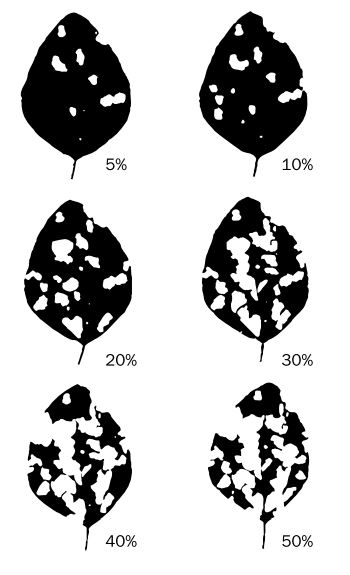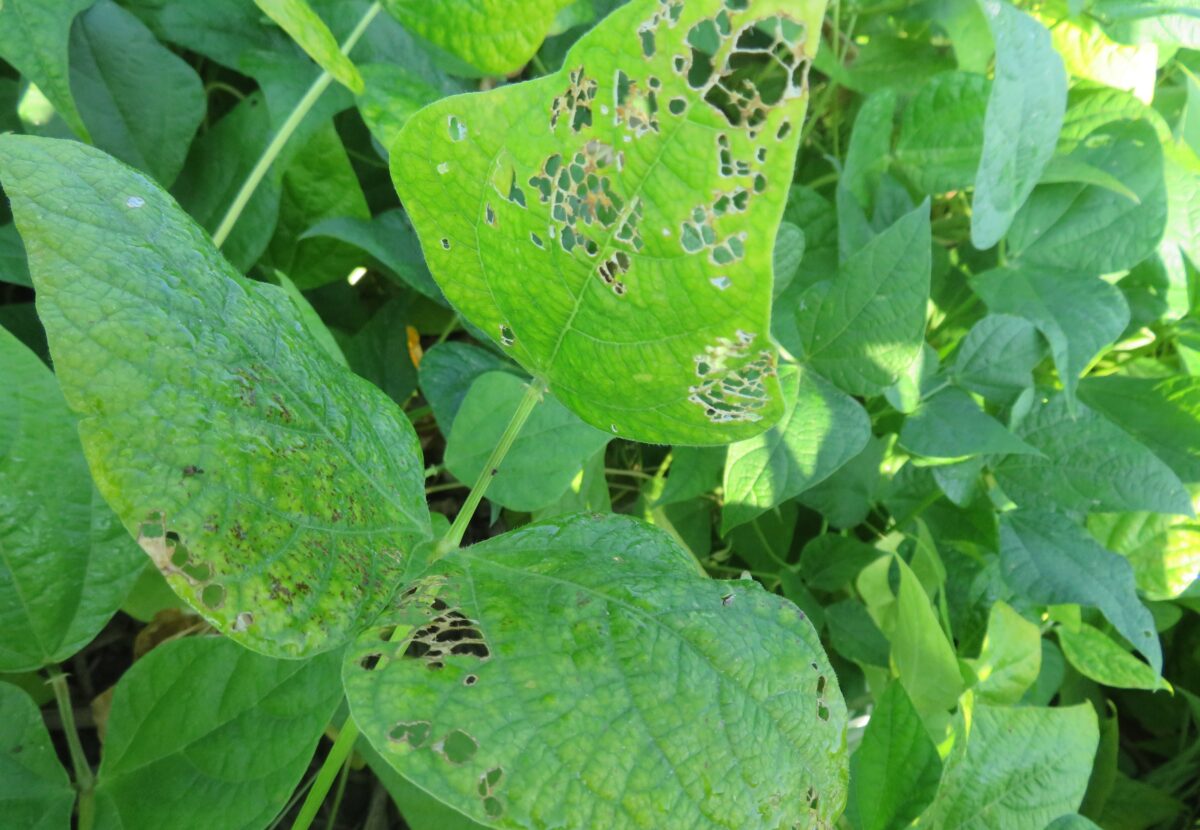Assessing Defoliation
Research conducted at the University of Guelph, Ridgetown Campus, indicates that prior to flowering, dry edible beans are able to tolerate up to 50% leaf loss with minimal loss in final yield. Complete defoliation prior to flowering delayed maturity by 30 days but lower levels of defoliation did not delay maturity. At later stages, the impact of defoliation is greater. Full impact depends on the growing conditions and the ability of the plant to recover. Losing more than one-third of the leaves during flowering or pod fill can greatly reduce yield.

A few insects feed on the leaves of dry edible beans. Bean leaf beetle and the occasional pests like Mexican bean beetle, grasshoppers and slugs can cause defoliation, though rarely do they reach threshold levels that require management in dry edible beans. No matter which pest is doing the feeding, the decision to spray comes down to how much defoliation is occurring prior to pod-fill, and is not based on the number of insects per plant, though the insect still needs to be present and actively feeding for the application to be cost effective. Once the beans are in the pod-fill stages, it is more important to assess pod-feeding injury instead of focusing solely on defoliation.
Scouting
From Vegetative to Pod-fill Stages: In 10 areas of the field, pick trifoliate leaves from five plants that are fully expanded in the middle of the plant canopy. Discard the least- and most-damaged leaflets from each trifoliate collected, leaving only one leaflet per trifoliate to evaluate. Compare the leaflet to the defoliation chart below, to determine the average percentage of defoliation in the field. Also take note of the crop stage at the time of the assessment.
Defoliation is often overestimated. Most of the defoliating insects feed on the tops of the plants and field edges first so that, upon first inspection of the field, it appears that there is a lot of defoliation. Make sure to inspect trifoliates from the middle of the plant canopy to get a good assessment of defoliation.

| Bean Growth Stage | Defoliation Threshold |
| Prior to bloom (vegetative stages) | 35% |
| After bloom up to pod-fill | 15% |
During Pod-fill Stages: Assess pods on 20 plants in five areas of the field. Avoid the field edge. Determine the number of pods with feeding injury or clipping and make note of the presence of adults. With higher value and stringent quality standards in dry edible beans, if 5%–8% of the pods inspected have feeding scars, control may be necessary. Ensure that adults are still presently active in the field before a spray is applied.
Management Strategies
- For fields with a history of defoliation, an insecticide seed treatment will protect the seedling crop from bean leaf beetles for a few weeks after planting though a foliar insecticide may still be required if defoliation thresholds have been reached. Bean leaf beetle rarely enter dry edible beans until mid-season.
- Note that insecticides will not control, and therefore will not reduce the damage caused by slugs. No effective rescue treatments are available for slugs.
- Use foliar insecticides when pod feeding injury thresholds have been reached and adults are still actively feeding.
- Pay attention to the product’s pre-harvest intervals as harvest approaches.
